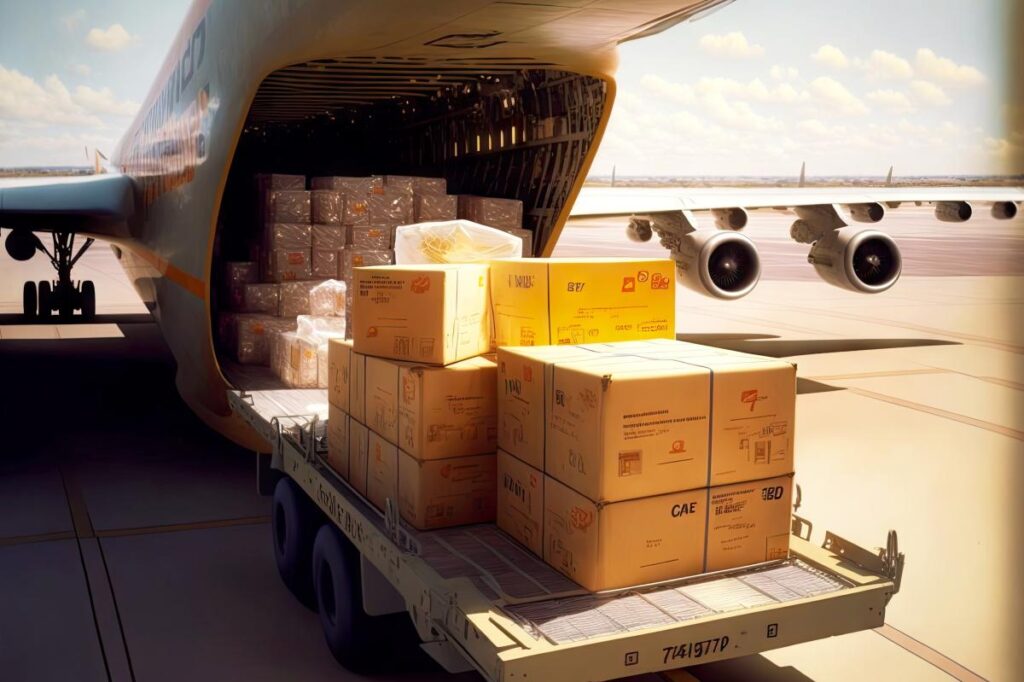- By TOP CHINA FREIGHT
- September 29, 2025
- Air Freight, Shipping
Table of Contents
China air freight news continues to dominate headlines as global trade adjusts to shifting demand, rising costs, and tighter schedules. Importers and exporters face ongoing challenges such as fluctuating freight rates, customs regulations, and delivery delays. However, with the right strategies, businesses can manage risks while benefiting from faster shipping and stronger supply chain resilience.

What is Driving the Latest China Air Freight News?
Air freight from China has become a lifeline for time-sensitive cargo, especially for sectors like electronics, fashion, and pharmaceuticals. The latest updates highlight three major drivers: global e-commerce growth, higher demand for just-in-time delivery, and ongoing port congestion that pushes shippers toward air transport.
Moreover, government regulations and customs requirements also play a critical role. For example, stricter export documentation can delay shipments, while capacity constraints at major airports like Shanghai Pudong and Guangzhou add further pressure. Businesses must stay informed to anticipate rate changes and plan ahead.
How Do Air Freight Costs From China Compare to Other Modes?

Air freight is significantly more expensive than sea or rail, yet its speed justifies the price for many industries. While sea freight offers lower costs for bulk goods, air cargo ensures delivery in days rather than weeks.
| Shipping Mode | Avg. Cost (per kg) | Transit Time | Best For | Pros | Cons |
|---|---|---|---|---|---|
| Air Freight | $4–$8 | 3–7 days | Urgent cargo, electronics, fashion | Fast, reliable, global coverage | Expensive, limited space |
| Sea Freight | $0.5–$2 | 25–40 days | Bulk, non-urgent | Economical, high capacity | Slow, risk of port delays |
| Rail Freight | $2–$4 | 15–20 days | Mid-value, mid-speed goods | Balanced speed/cost | Limited routes, customs hurdles |
Therefore, companies shipping high-value products often accept higher air freight rates to maintain sales cycles and customer satisfaction.
Why is Air Freight From China Facing Capacity Challenges?
One major headline in recent China air freight news is limited aircraft availability. Passenger flight reductions due to global travel fluctuations have decreased belly cargo space, pushing freight into dedicated cargo planes. Additionally, seasonal demand spikes—especially before holidays like Christmas—can double rates overnight.
Airlines prioritize high-value goods such as electronics, pharmaceuticals, and luxury fashion, which puts smaller shippers at a disadvantage. Businesses must therefore plan shipments weeks ahead, secure space through reliable freight forwarders, and be prepared for surcharges.
What Documents Are Required for China Air Freight Shipments?

Proper paperwork is critical to avoiding delays in customs. Missing or inaccurate documents often result in fines or shipment holds.
| Document | Purpose | Notes |
|---|---|---|
| Air Waybill (AWB) | Transport contract and receipt | Must include correct shipper/consignee details |
| Commercial Invoice | Declares goods’ value | Required for customs clearance |
| Packing List | Details cargo contents | Supports inspection |
| Export License | Required for restricted goods | Depends on product type |
| Certificate of Origin | Proves where goods are made | Sometimes mandatory for trade agreements |
Moreover, digital customs platforms are increasingly used in China to streamline clearance, but shippers still need to double-check compliance.
How Long Does China Air Freight Take to Key Destinations?
E-commerce has reshaped logistics, and much of the recent China air freight news is tied to cross-border parcel growth. Online retailers need fast restocking and international delivery, making air freight ideal for high-demand products.
However, high costs can erode margins. Some businesses adopt a hybrid approach: shipping bulk stock by sea while using air freight for urgent replenishment. This dual strategy balances cost and speed while avoiding out-of-stock risks.
What Are the Pros and Cons of China Air Freight?
Air freight offers unique advantages, but it also carries limitations.
| Pros | Cons |
|---|---|
| Fastest delivery option | Highest cost per kg |
| Reliable schedules | Limited cargo capacity |
| Secure handling | Sensitive to fuel surcharges |
| Global airport coverage | Seasonal price volatility |
Therefore, companies must assess whether speed outweighs the financial burden. For high-margin goods, the benefits usually justify the expense.
Case Study: Electronics Importer Using China Air Freight

A mid-sized U.S. electronics retailer faced stockouts due to unexpected demand spikes. Sea freight transit times of over 30 days left shelves empty. To resolve this, the company shifted part of its shipments to air freight.
Although costs increased by 40%, the retailer avoided lost sales worth over $200,000 in one quarter. Moreover, by combining air and sea freight, they achieved both cost efficiency and flexibility. This case illustrates how strategic use of China air freight ensures business continuity and customer satisfaction despite higher expenses.
How Can Shippers Control Rising China Air Freight Costs?
Businesses can adopt several techniques to reduce expenses:
- Book in advance: Secures better rates and guaranteed space.
- Use consolidation: Share space with other shippers to lower costs.
- Leverage off-peak seasons: Avoid peak periods when rates surge.
- Negotiate with forwarders: Long-term partnerships often lead to discounts.
- Optimize packaging: Smaller, lighter shipments reduce chargeable weight.
Moreover, adopting supply chain visibility tools helps monitor routes, anticipate disruptions, and reduce emergency shipments.
Types of Sea Freight Services
Ideal for large shipments where the container is not shared with other shippers, providing security and faster handling.
Cost-effective for smaller shipments, though with longer handling times due to consolidation and deconsolidation.
Options such as reefer containers for temperature-sensitive goods or open-top containers for oversized cargo.
Tips for Reducing Sea Freight Costs
- Book early to secure better rates during peak seasons.
- Optimize container utilization to avoid paying for unused space.
- Consider using less congested ports for faster handling.
- Negotiate long-term contracts with forwarders to stabilize costs.
- Consolidate shipments when possible to reduce LCL costs.
Conclusion
China air freight news highlights ongoing challenges in costs, capacity, and customs, but it also underscores the mode’s importance for global trade. While expensive, air cargo offers unmatched speed, reliability, and security. Importers and exporters can balance costs through consolidation, hybrid shipping strategies, and early booking. Ultimately, staying informed and proactive ensures that businesses can benefit from China’s air freight network while safeguarding supply chain resilience.
Need a Shipping Quote?
If you want expert guidance and peace of mind, our team is ready to assist.
TJ China Freight offers tailored solutions to help businesses of all sizes ship more reliably from China.

FAQ
Q1:What documents are needed for sea freight to the UK?
Bill of Lading, commercial invoice, packing list, and customs declaration.
Q2:Which UK port is best for imports from Asia?
Felixstowe is the busiest, but Southampton and London Gateway are also popular.
Q3:How can I lower sea freight costs?
Book early, use FCL when possible, and consolidate shipments.
Q4:Is sea freight cheaper than air freight?
Yes, sea freight is more economical for bulk goods.
Q5:Can I ship perishable goods by sea?
Yes, reefer containers keep items like food and medicine fresh.
